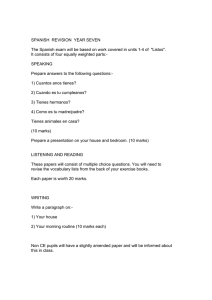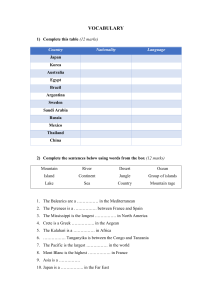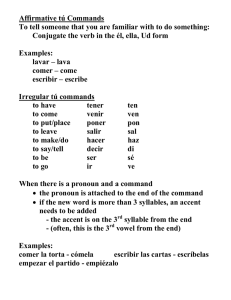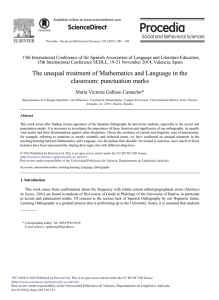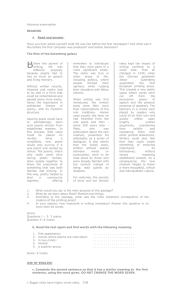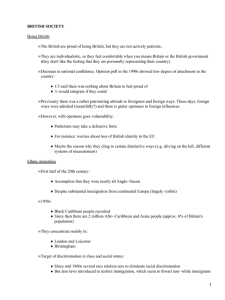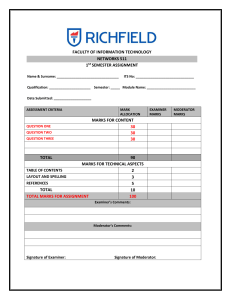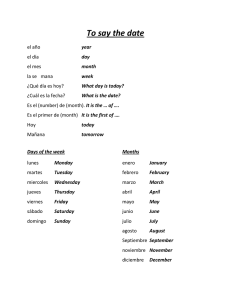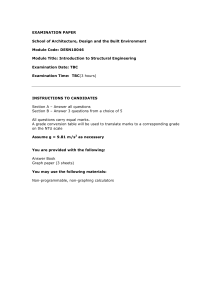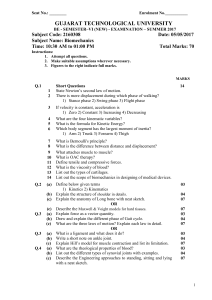Punctuation marks and written accents
Anuncio
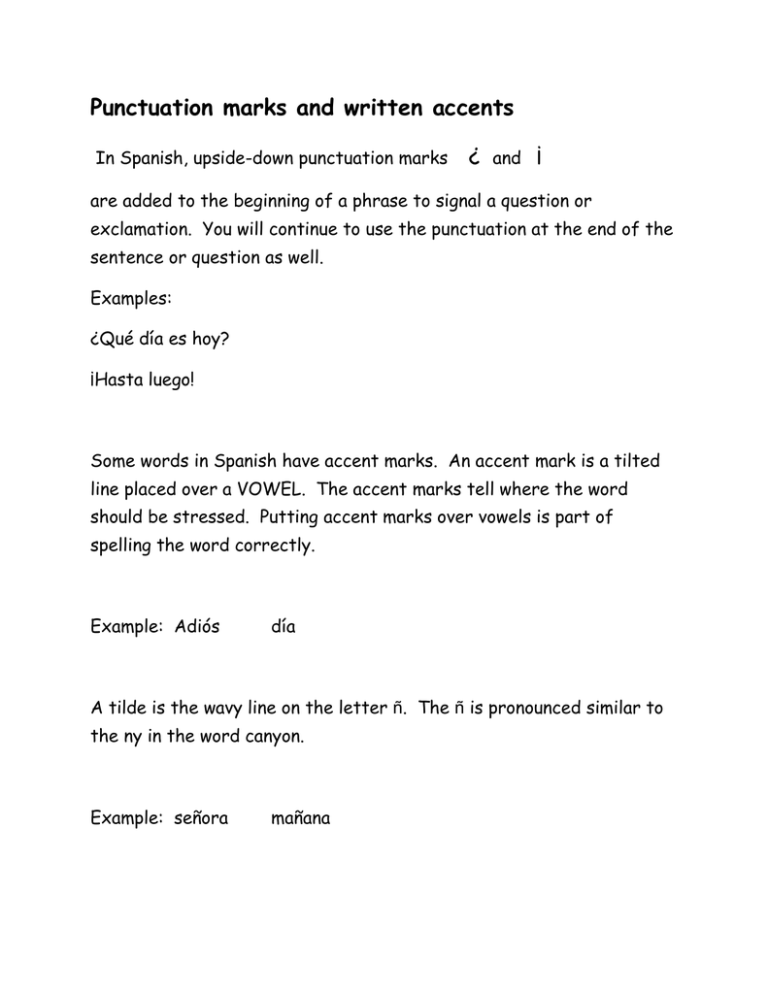
Punctuation marks and written accents In Spanish, upside-down punctuation marks ¿ and ¡ are added to the beginning of a phrase to signal a question or exclamation. You will continue to use the punctuation at the end of the sentence or question as well. Examples: ¿Qué día es hoy? ¡Hasta luego! Some words in Spanish have accent marks. An accent mark is a tilted line placed over a VOWEL. The accent marks tell where the word should be stressed. Putting accent marks over vowels is part of spelling the word correctly. Example: Adiós día A tilde is the wavy line on the letter ñ. The ñ is pronounced similar to the ny in the word canyon. Example: señora mañana
